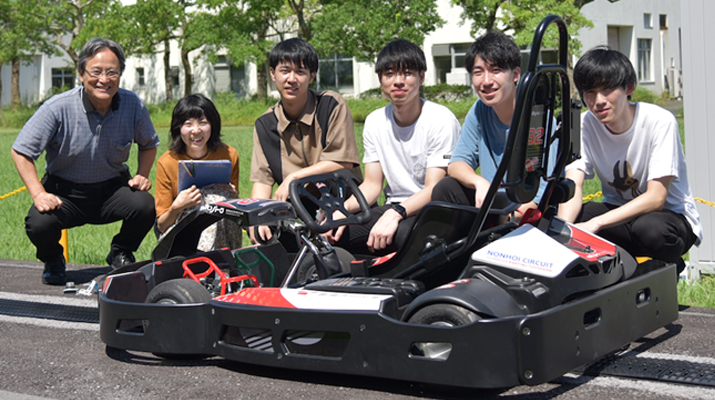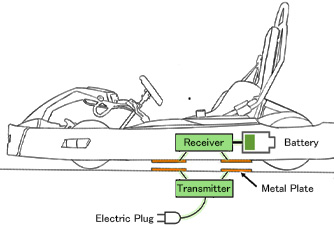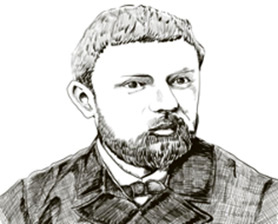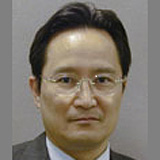
ここからコンテンツです。

Starting development of a wireless charging system for amusement park Go-karts
A future vehicle that will make children’s dreams come true By Takashi Ohira
In response to a request from the city of Toyohashi, the Future Vehicle City Research Center at Toyohashi University of Technology has started to develop a wireless recharging system for the go-karts at Nonhoi Park , Toyohashi’s Zoo & Botanical Park. Nonhoi Park operates a go-kart track for children. Just as for cars on public roads, converting the go-karts on the premises from conventional gasoline-powered vehicles to electric ones would help reduce their impact on the environment. In addition, electric go-karts are also more child-friendly as they emit no exhaust gas or engine noise. Furthermore, the electric go-karts are motor-driven, meaning that they also have higher starting acceleration performance. This makes them the perfect machine for a go-kart track with many curves. Not only children, but adults too will be fascinated by the experience of exciting, real-life go-karting that cannot be found in any digital game.

Typical electric go-karts have a drawback specific to the electric type: namely, the battery problem. Currently, the heavy batteries are removed from the go-kart by an attendant and carried to an electrical facility for charging. This led the research team to consider the challenge, "When the go-kart returns to the boarding area after traveling on the track, might it be possible to charge the batteries quickly before the next departure without removing them?" One early thought was to attach and remove a charging cable to and from the go-kart. However, the cables for quick charging are thick and heavy, making them too cumbersome for easy regular use. Therefore, we came up with the idea of wireless charging. If we could lay electrode plates on the road surface of the go-kart stopping area and wirelessly transmit power to the go-kart from there, there would be no need to handle heavy cables.
The laboratory has since commenced this research on wirelessly charging the go-karts in Nonhoi Park. The key to successful quick charging is the efficient transfer of large amounts of power. Focusing on hyperbolic geometry, a special kind of plane geometry born in Europe in the 19th century, as the key to high efficiency, the design and prototyping of a wireless quick charging system that make full use of hyperbolic geometry is already underway. Such hi-tech go-karts could become a social implementation model for future electric vehicles. The future go-karts will make children’s dreams come true with them as they take flight.
"We faced a major hurdle when thinking about how to efficiently deliver energy from the power source to the go-kart batteries wirelessly. We found that the wireless electrodes and batteries which we were trying to mount on the go-kart had a completely different high-frequency impedance (ratio of voltage to current). We fumbled our way through various different methods at first, thinking that there had to be some way for us to overcome this barrier. Finally, we realized that this problem came down to planar geometry, which deals with how to bring two points that are far apart from each other on the plane closer together. At the same time, our laboratory proposed an attempt to utilize hyperbolic geometry, a 19th century European discovery, to solve contemporary problems. (References [1] to [9]).

We call this attempt the ‘analog renaissance’. In hyperbolic geometry, if we try to connect two points on a plane by the shortest distance, the path is not always a straight line. The key to solving the problem was the hyperbolic distance metric concept, advocated by French mathematician Henri Poincaré. New solutions are created by incorporating counter-intuitive geometric ideas into system design. We will showcase this new solution at Toyohashi Nonhoi Park." said Research Team Leader, Project Research Associate Minoru Mizutani, the research team leader. We are grateful that he could share such fascinating insights about this research.
The goal of the research team members is to implement the world’s first future-vehicle technology in Toyohashi at Nonhoi Park. Their hope is that many people will be thrilled by the experience of this new go-kart, and that it will spread to amusement and theme parks not only in Japan but all around the world.
References
[1] T. Ohira, "A radio engineer’s voyage to double-century-old plane geometry," IEEE Microwave Magazine, .vol21, no.11, pp.60-67, Nov. 2020.
[2] M. Mizutani and T. Ohira, "Design theory of a standing wave mitigator for a moving load along a transmission line," IEEE International Conference Radio Frequency Integration Technology, pp.214-216, Hiroshima, Sept. 2020.
[3] A. Suzuki, S. Tsukamoto, and T. Ohira, "Diskwide spiral trajectory impedance matching network for frequency-diversity power transfer," IEEE International Conference Radio Frequency Integration Technology, pp.217-219, Hiroshima, Sept. 2020.
[4] T. Ohira, "Poincaré length," IEEE Microwave Magazine, vol.21, no.3, pp.120-121, March 2020.
[5] K. Yamada and T. Ohira, "Graphical representation of the power transfer efficiency of lumped-element circuits based on hyperbolic geometry," IEEE Transactions Circuits Systems II, vol. 64, no. 5, pp. 485 - 489, May 2017.
[6] 大平 孝, "スミスチャートの歩き方," 電子情報通信学会誌, vol.103, no.7, pp.709-712, July 2020.
[7] 大平 孝, "ポアンカレ視点で見るコイルとコンデンサ, " CQ出版 RFワールド, no.50, pp.113-115, April 2020.
[8] 大平 孝, "電界結合ワイヤレス電力伝送," CQ出版 MOTORエレクトロニクス, no.10, pp.93-102, April 2019.
[9] 山田恭平, 非ユークリッド幾何学を用いたリアクタンス回路の特性の表現, 豊橋技術科学大学博士 学位論文 13904甲第783号, March 2018.
遊園地ゴーカートワイヤレス充電システムの開発をスタート
子供たちの夢を乗せて走る未来ビークルBy 大平 孝
豊橋技術科学大学未来ビークルシティリサーチセンターは豊橋市からの要望を受け、豊橋総合動植物公園(のんほいパーク)内のゴーカートワイヤレス充電システムの開発をスタートしました。豊橋市動植物公園のんほいパークでは子供たちのためのゴーカートコースを運営しています。公道を走るクルマと同様に敷地内ゴーカートも電動化が望まれています。電動ゴーカートは従来のガソリン式ゴーカートに比べて排気ガスやエンジン騒音を出さないという点で子供たちに優しくまた周囲環境の観点でも優れています。さらに電動ゴーカートはモーター駆動であるためガソリンカートに比べ発進加速性能が優れています。特にカーブが多いゴーカートコースにはぴったりのマシンです。デジタルゲームでは体験できないリアルでエキサイティングなゴーカート走行に子供のみならず大人も夢中になるでしょう。
一般的な電動ゴーカートは電動式ならではの難点すなわちバッテリー問題があります。現状では重いバッテリーを係の方がゴーカートから取り外して電気設備のある場所まで運んで充電しています。そこで研究チームは、ゴーカートがコース走行し乗降場へ戻ってきたときバッテリーを取り外すことなく次の発車までに急速満充電できないだろうか、と考えました。すぐ思いつく案は充電ケーブルをゴーカートに着脱することです。しかし急速充電用のケーブルは太くて重いため毎回の取り回しが大変です。そこで考えた案がワイヤレス充電です。停車エリアの路面に電極板を敷設してそこからワイヤレスでゴーカートへ電力を送ることができれば重いケーブルの扱いが不要となります。
研究室ではワイヤレスでのんほいパークのゴーカート充電する研究をスタートしました。急速充電を成功させる秘訣は大きな電力を効率よく伝えるしくみです。高効率化の鍵として19世紀にヨーロッパで生まれた双曲幾何学(特殊な平面幾何学)に着眼しました。双曲幾何学をフル活用してワイヤレス急速充電システムの設計と試作を進めています。先進技術を搭載したゴーカートは未来の電気自動車の先行的社会実装モデルとなります。未来のゴーカートが子供たちの夢を乗せて走り出すことでしょう。
「電源からワイヤレスでゴーカート搭載バッテリーへ効率よくエネルギーを届けるしくみを考える中で大きな壁にぶつかりました。それはゴーカートに搭載しようとしているワイヤレス電極とバッテリーでは高周波インピーダンス(電圧と電流の比)が全く異なるという壁です。この壁をなんとか克服できないかと最初はいろいろな方法を手探りしている状態でした。
よく考えているうちに、この問題は平面上で互いに離れた位置にある2点を如何に近づけるかという平面幾何学の問題に帰着するのではないかということに気づきました。折しも研究室では19世紀に欧州で生まれた「双曲幾何学」を現代の課題解決に活かそうという試みが提案されていました:文献[1]-[9]
これをアナログルネサンスと呼んでいます。双曲幾何の世界では、平面上にある2点間を最短で結ぼうとすると、不思議なことにその経路は必ずしも直線になるとは限りません。フランスの数学者アンリ・ポアンカレが提唱した双曲的距離計量という概念が問題解決の鍵となりました。直感と異なる幾何の発想をシステム設計に取り入れることで新しいソリューションが生まれます。私たちは豊橋のんほいパークでこの新ソリューションを社会実装してみせます。」と、研究チームリーダーの水谷豊特任助手は開発秘話を語ります。
この豊橋発世界初の未来ビークル技術をのんほいパークで社会実装し、研究チームは、このゴーカートをみなさまにご覧頂いて全国の遊園地そして世界中のテーマパークへ展開していきたいと考えています。
Researcher Profile

| Name | Takashi Ohira |
|---|---|
| Affiliation | Department of Electrical and Electronic Information Engineering |
| Title | Professor |
| Fields of Research | Wave Engineering, Wireless Power Transfer |
ここでコンテンツ終わりです。
